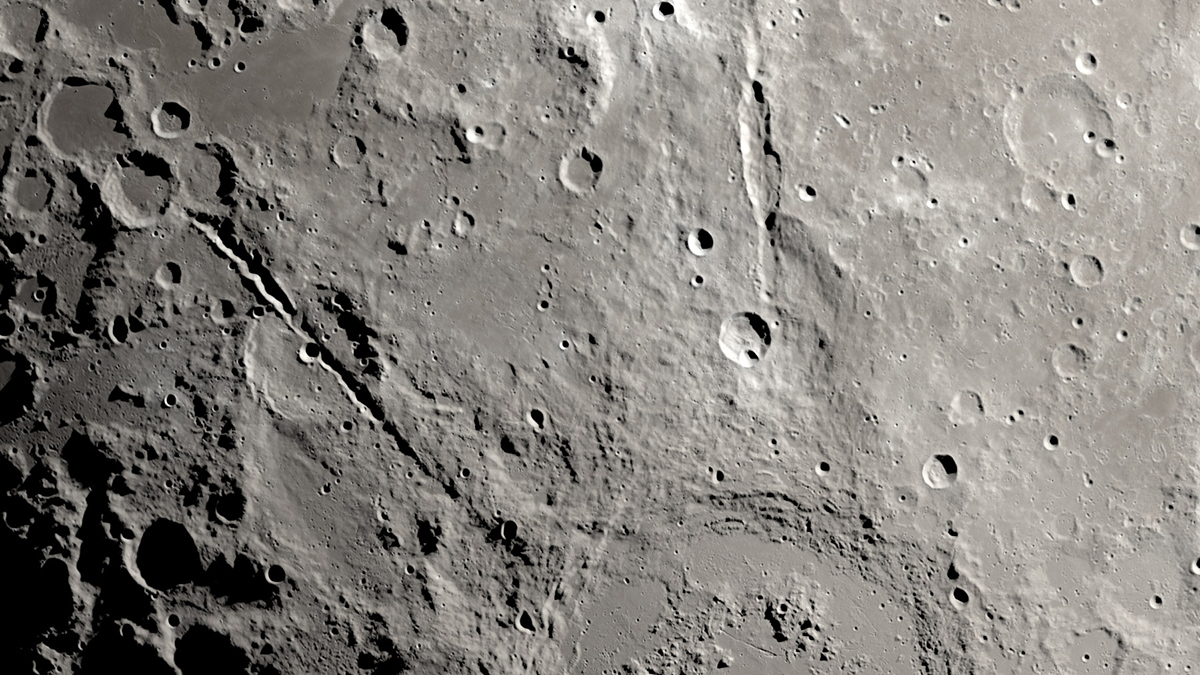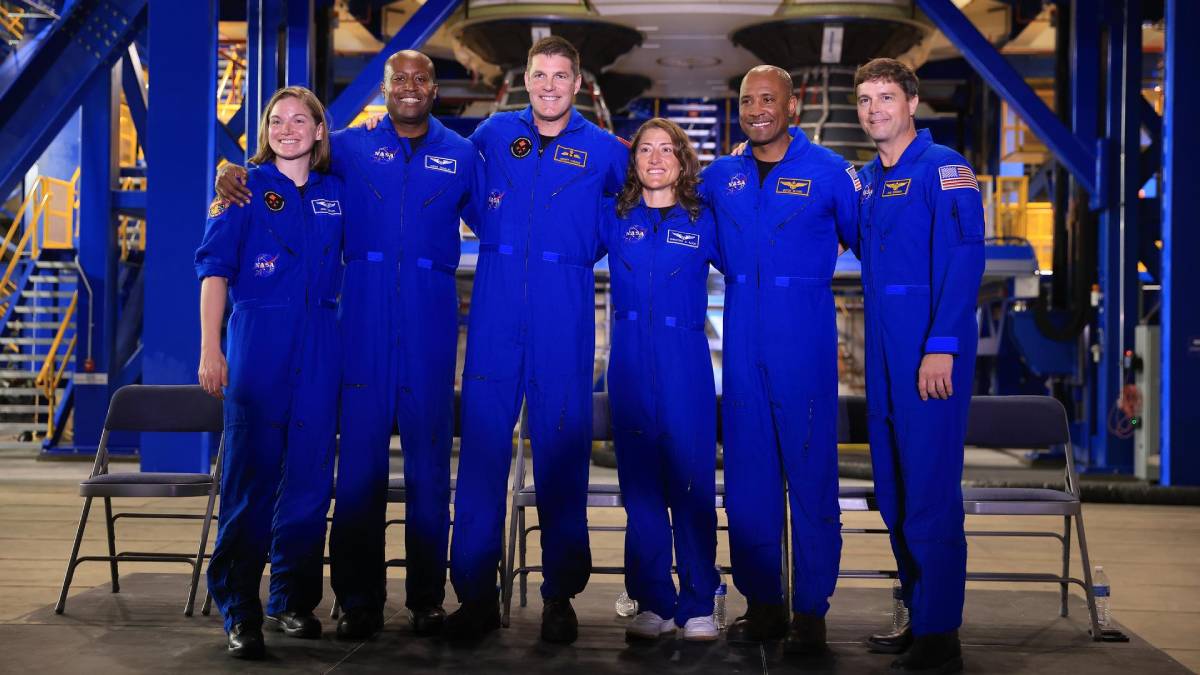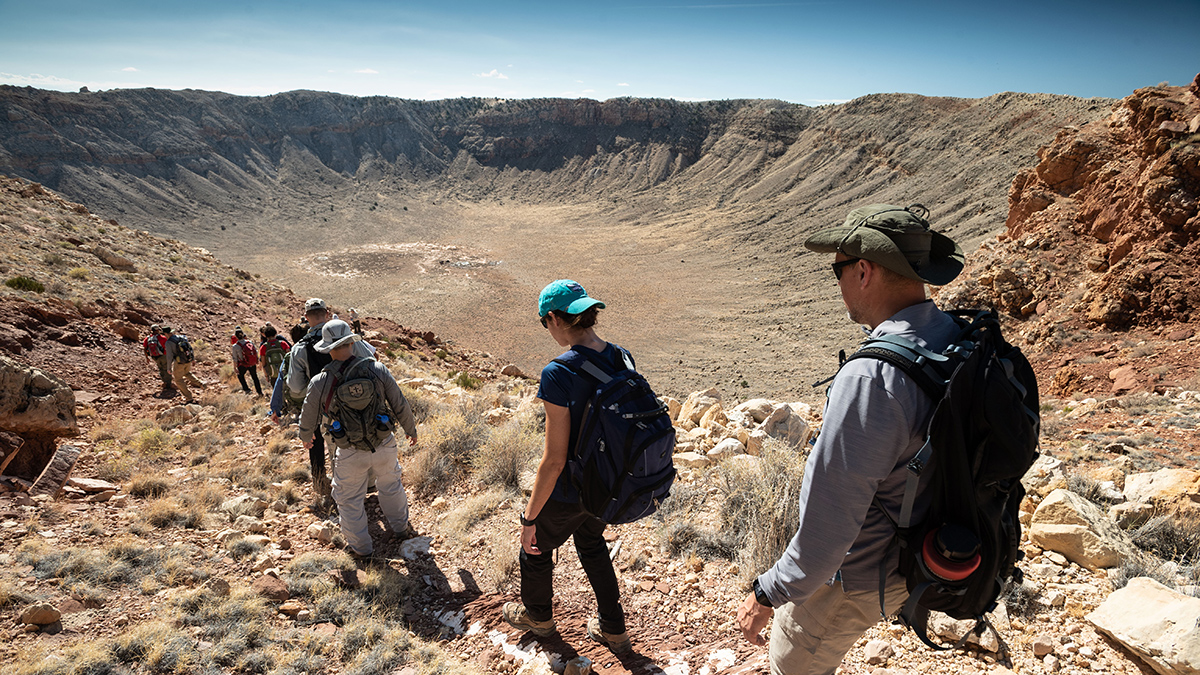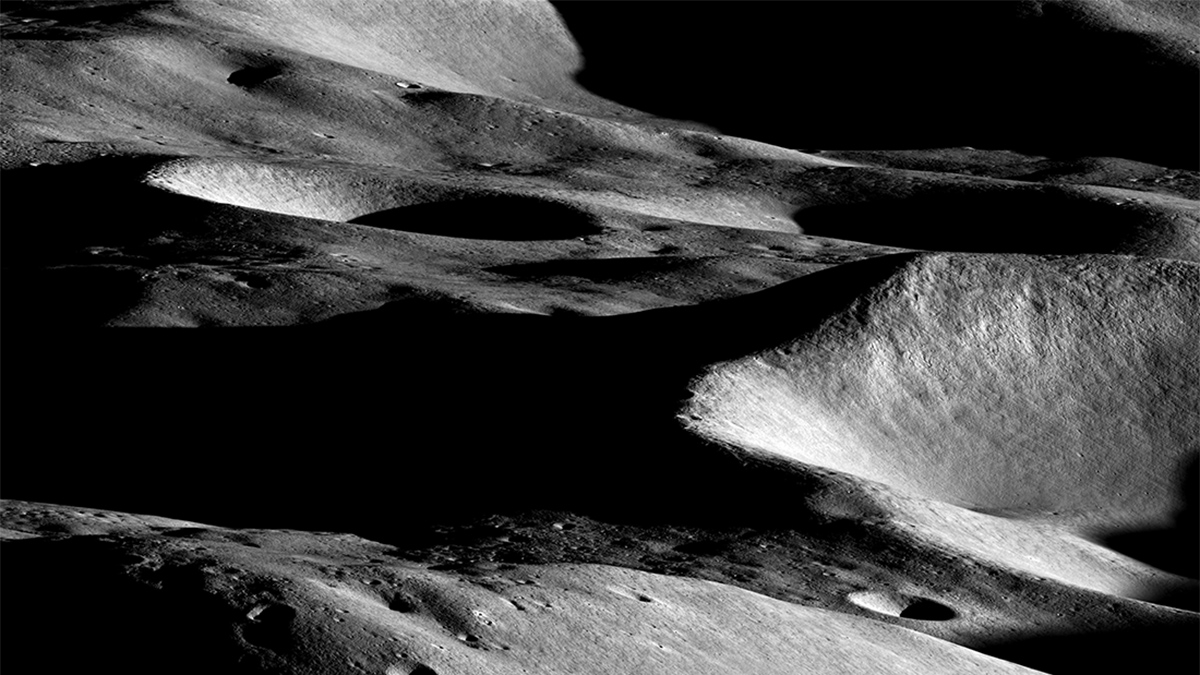Scientists are testing “mooncrete,” a concrete analogue made from lunar regolith, as a potential material to build structures on the Moon.
Artemis
Impact Spewed Debris Away from the Moon’s South Pole
Two valleys extending away from a giant crater suggest that upcoming Artemis missions are more likely to sample ancient lunar terrain than impactor material.
NASA Abandons Pledge to Put Women, Astronauts of Color on the Moon
NASA has dropped its commitment to land the first woman, the first person of color, and the first non-American astronaut on the Moon through the Artemis program.
The Relatively Messy Problem with Lunar Clocks
Using Einstein’s theory of general relativity, physicists found that clocks on the Moon would run 56 microseconds faster than clocks on Earth. That finding will help future lunar missions navigate.
The Art of Doing Fieldwork on the Moon
How early-career planetary scientists are preparing to support the astronauts who will return to the lunar surface and beyond.
Fiber-Optic Networks Could Reveal the Moon’s Inner Structure
Distributed acoustic sensing offers a cost-effective alternative to traditional seismic arrays, and building such a network on the Moon might be possible.
Commercial Lander Touches Down on Moon
The first Intuitive Machines lunar mission carries/carried six scientific payloads from NASA to contribute to the Artemis Program.
Mapping the Moon to Shield Astronauts from Radiation
Scientists are charting landing spots that offer future lunar astronauts protection from the Sun and deep space.
Here’s How Artemis Astronauts Will Navigate on the Moon
The next wave of lunar explorers is headed to terrain that promises to be both stunning and challenging. Here’s how they’ll cope with some of the difficulties they’ll encounter.
NASA Prepares Its Artemis Gateway to Orbit the Moon
Throughout its anticipated 15-year tour of duty, the Gateway will serve as a station for astronauts and lunar landers—and enable new scientific discovery.










